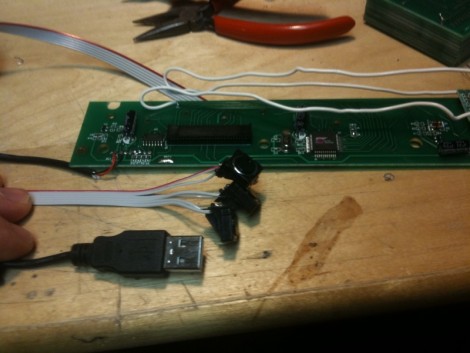
This is a concept input device that [Tech B] built for disabled users. The device uses an accelerometer along with a piezo sensor (right click) and a push button (left click) to function as a mouse. The Arduino that resides in a breadboard on the side of the hat communicates with the computer over a serial connection, using PySerial to translate the microcontroller data into cursor commands with the power and ease of the Python programming language.
During development [Tech B] made a proof-of-concept video using a Basic Stamp which you can watch after the break. He found that this input device was less complicated, more accurate, and much less resource intensive than his webcam IR tracking system.












